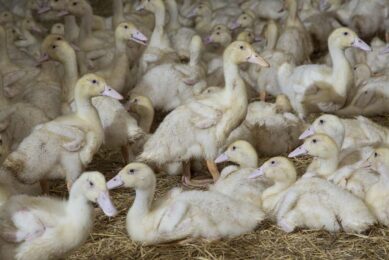S. Korea: Low pathogenic H5N2 in ducks
On a duck farm in South Korea low pathogenic bird flu type H5N2 has been diagnosed.
The duck farm in Chung Chong-Namdo (Gobuk-myeon, Seo-san city) holds 26,800 duck of which 40 birds were found to be positive for H5N2. The source of the infection could not be established.
As part of the yearly surveillance programme, a member of the Livestock Health Control Association collected samples from a duck raising farm in Seo-san city and requested the test for avian influenza to the Chungchong-namdo Veterinary Research Institute (VRI) on 7 December 2009.
After it was positive by haemagglutination test, the sample was sent to the National Veterinary Research and Quarantine Service (NVRQS) on 22 December. In the course of the confirmatory test, the isolated virus was confirmed as H5 avian influenza virus on 24 December and finally confirmed as low pathogenic avian influenza virus (H5N2) by gene sequencing.
26,800 ducks raised in the affected farm were culled and 176,000 eggs kept in the farm were destroyed.
The whole procedure for burial and burning was completed on 26 December. Traceback investigation of epidemiologically related farms and enhanced surveillance on neighbouring farms are underway.
According to the OIE Animal Health Information Department H5 and H7 avian influenza in its low pathogenic form in poultry is a notifiable disease and the applied control measures have to take place (a.o. stamping out).
H5N1 in Cambodia
In a backyard flock in Cambodia the highly pathogenic influenza strain H5N1 was found.
In a flock of 1,216 birds in Ponhea Kraek 143 chicken were found dead and examined positive for bird flu. The remaining 875 birds were destroyed. Movements of birds in the area is restricted.
Join 31,000+ subscribers
Subscribe to our newsletter to stay updated about all the need-to-know content in the poultry sector, three times a week. Beheer
Beheer








 WP Admin
WP Admin  Bewerk bericht
Bewerk bericht